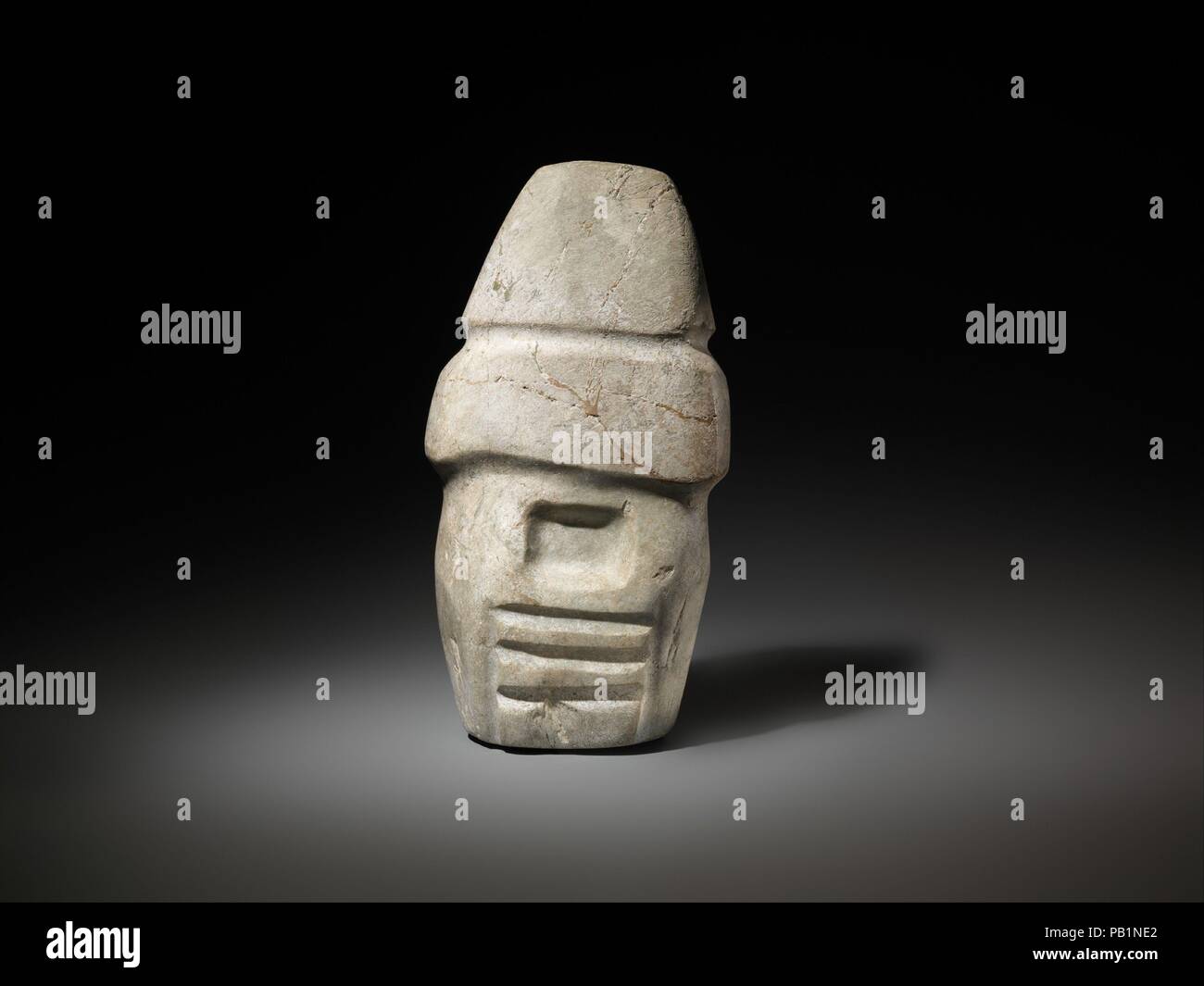Temple Model. Culture: Mezcala. Dimensions: Height 5-5/8 in.. Date: 200 B.C.-A.D. 500. Stone models in the Mezcala style come largely from the present-day state of Guerrero, in southwest Mexico. A particularly long-lived tradition, these works may have been produced over some one thousand years, from as early as 500 B.C. Little is known about their archaeological contexts, and there are few points of reference with surviving architecture in the region. It is possible that these models emulate buildings with stone columns, such as those from Cuetlajuchitlán; alternatively they could recall abo

Image details
Contributor:
Album / Alamy Stock PhotoImage ID:
PB1NE2File size:
40.1 MB (682.7 KB Compressed download)Releases:
Model - no | Property - noDo I need a release?Dimensions:
4322 x 3242 px | 36.6 x 27.4 cm | 14.4 x 10.8 inches | 300dpiPhotographer:
AlbumMore information:
This image could have imperfections as it’s either historical or reportage.
Temple Model. Culture: Mezcala. Dimensions: Height 5-5/8 in.. Date: 200 B.C.-A.D. 500. Stone models in the Mezcala style come largely from the present-day state of Guerrero, in southwest Mexico. A particularly long-lived tradition, these works may have been produced over some one thousand years, from as early as 500 B.C. Little is known about their archaeological contexts, and there are few points of reference with surviving architecture in the region. It is possible that these models emulate buildings with stone columns, such as those from Cuetlajuchitlán; alternatively they could recall above- or below-ground funerary structures, in which case the columns would represent wood supports of a tomb or a funerary pyre. Mezcala models may have served multiple functions over time, in keeping with the Mesoamerican custom of repurposing or recarving stone objects. Oblong models, for example, may have been recarved from celts, ritual tools of great symbolic importance. Several have holes drilled into the base, which could have been used to fasten them with fiber to a larger item such as a ritual bundle, a practice widely known in archaeological and ethnographic contexts in Mesoamerica. Offerings of Mezcala stone objects in the Templo Mayor, the sacred center of the Aztec capital, Tenochtitlan, built between 1325 and 1519, underscore the importance of these works as a continuation of tradition, as heirlooms, or as emulations of an ancient style. Museum: Metropolitan Museum of Art, New York, USA.